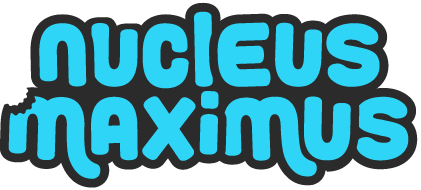Let’s start with this obvious truth, the genesis of every sale is to be seen.
In the era and aftermath of COVID, we can reasonably expect that in-store shopping habits will be more accelerated and pre-programmed. For smaller brands, with lighter trade spend and fewer facings, this can be a challenging environment to generate discovery and trial within.
More than ever, your startup’s packaging must punch above its weight class to outmuscle larger, more recognizable brands for attention and sales.
So, how’s it done?
Every minute, a new shopper shows up in your category and immediately begins processing visual data. In mere seconds, patterns quickly emerge as the browsing eye processes shape, color, imagery, graphics and words to create order out of chaos. To thrive in this warp-speed moment of truth, your package must scale its presence and reach out with visual anomalies that cause the eye to stop, and notice.
Here’s 4 package design tips we recommend to jumpstart attention at shelf.
#1 Introduce Structure Innovation
You might have gathered that most milk is sold in cartons, and so when Califia debuted it’s contoured carafe, shoppers couldn’t help but notice something fresh had arrived in the dairy category.
Califia’s now brand-iconic carafe is a treat for tired eyes.
Most yogurts are sold in narrow tall cups, and so Noosa, who makes nothing close to ordinary yogurt, decided a squatted cup would speak volumes to shoppers about their product’s uniqueness and how it should be enjoyed. For Noosa, investing in a unique structure right out of the gate also worked wonders for generating attention and early notoriety with retailers and other trade partners.
When everyone zigs, consider zagging beyond the common carrier. What shapes dominate your set? Is it time a new innovative package came along to shake things up?
#2 Color Renegade, or Chameleon?
Colors are powerful associative clues that brands commonly exploit to lead hurried shoppers toward efficient conclusions.
In a jam and need a jar of grape jelly? Look for something purple.
Need a case of water? Look for stacks of blue-shrink-wrapped bottles.
Colors can tell shoppers they’re in the right place, or that they’ve found the flavor variety they’re hunting for. What color laws should your brand play into? And, consider the upside of turning your category’s color standards upside down. Evian did, can you tell?
Tate’s owns an uncommon color in their category. Guayaki, too.
Guayaki went all-in on yellow to build powerful brand recognition.
#3 Product Imagery
Have you ever slowly walked by and stared at every box behind Walmart’s freezer cases? I highly recommend it. It’s literally a gold mine of packaging best practices researched and financed by the world’s largest brands, all jockeying for share at the world’s largest retailer.
One thing becomes immediately obvious at Wally World, BigCo believes in the power of big appetite appeal. Kraft and Hormel know that when shoppers show up at shelf desperate for pizza - they’ll reach for a porny photograph of ’cheese pull’.
Questions BigCo asks to win share of stomach
- How can we make frozen broccoli look…amazing?
- What if we simply showed the largest bowl of cereal in the history of mankind?
- What does the shopper want refreshment to look like?
- What images would make our home-cooked promise hit home?
Product imagery for a brand like Coolhaus might say, ‘you’ve never had an ice cream sandwich like this before’. Your product photography might lead an entirely different narrative than BigCo, but don’t overlook the best practices that your category leaders are hiding in plain site.
crisp green’s oversized whole fruit is literally impossible to miss at shelf.
#4 Go Big, Or Go Home
Taken individually, consider every design element crammed into the small confines of your package. Now, zoom out and imagine the collective visual noise of 70 facings all vying for a shopper’s attention. In this overwhelming reality, your odds of winning attention are greatly improved simply by offering the shopper’s eye a landing spot.
Scaling and isolating a single design element is a trusty trick for starting a staring contest. A gelato brand’s packaging might serve up the largest scoop in the freezer set. Siete centers a large stoic heron on their chip bags. 4505’s pork snacks star a pig.
Siete owns one of the largest graphic elements in the salty snack aisle.
Standing at a distance of 4-5 feet away, which packages offer the largest focal points for shoppers in your category?
Making The Most of Your Audition
Once you’ve earned attention using some of the tips above, you’ll want to go well out of your way to acquiesce to shoppers' elevated motivation to ‘get in and get out’. Oversimplifying your PDP (principal display panel) with incredibly pointed messaging is always a shopper-friendly design strategy. Think of it as a guided tour of your products must-know details, all contained and sized accordingly. Here’s a masterful example from Beyond Meat.
These timeless package design fundamentals have always bared fruit, this year, the stakes are higher than ever for challenger brands to get them right.
Empathize with the shopper’s more programmed and accelerated experience at shelf and take a pause to imagine how you might better invite discovery, there’s not a moment to waste.
Need help imagining new opportunities for your brand to jump off shelf? Let’s talk.



